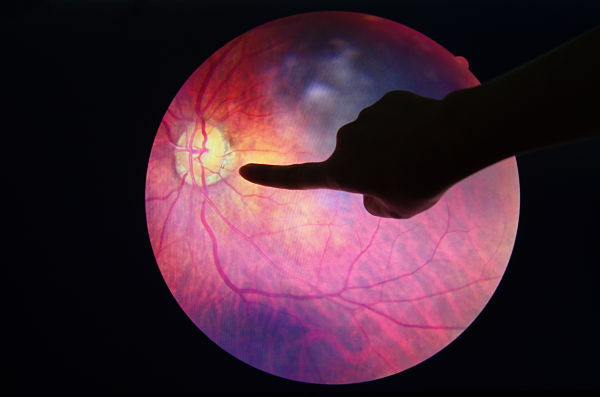About Diabetic Retinopathy

Diabetic eye disease comprises a group of eye conditions that affect people with diabetes. These conditions include diabetic retinopathy; diabetic macular oedema (DMO); cataract and glaucoma.
Diabetic retinopathy is the most common cause of vision loss amongst people with diabetes and the leading cause of vision impairment and blindness amongst working age adults.
Causes
High blood sugar is associated with damage to the tiny blood vessels (capillaries) in the retina causing them to leak fluid or haemorrhage which in turn distorts vision. The longer that people have diabetes the greater the risk of this eye disease developing.
The stages of Diabetic Retinopathy
Unfortunately the early stages are often unnoticed which is why annual eye screening is highly recommended for those with diabetes. A retinal photograph usually takes 30 minutes and there is an excellent national screening programme accessed through your GP.
There are four stages to diabetic retinopathy and only when the disease is at R3 might you experience diabetic retinopathy symptoms such as floaters, blurred vision, night blindness or loss of vision…
- Background retinopathy (R1) - when small balloon-like swellings called micro aneurysms form in the eye capillaries.
- Non –proliferative retinopathy (R2) when your blood vessels swell, distort and lose the ability to transport blood.
- Proliferative retinopathy – (R3) when many of your capillaries are blocked thus depriving the retina of blood and oxygen. The retina then reacts by driving the growth of new blood vessels. These grow inside the retina and into the fluid that fills they eye. Since they are fragile and prone to haemorrhages this can affect the vision in your eye as light entering the eye is now blocked by blood. Large haemorrhages can cause scar tissue which pulls on the retina and distorts it leading to the retina detaching and a serious risk of sight loss.
- Diabetic Maculopathy (M1) when you experience blurred vision in the centre of your eye this is caused by blood vessels leaking fluid or protein onto the macula. This is the area of the eye which provides us with our central vision which means fine detail is blurred and colours are washed out.
Whilst we do not exactly know what mechanism causes high blood sugar to damage the capillaries, we do know that diabetic retinopathy is more common in those with type 1 diabetes than in those with type 2.
A 2017 UK study looking at 7.7 million patients between 2004 and 2014 reported that this was at 48% for type 1 and 28% in those people with type 2. This was similar to a 2015 study in Wales which estimated the percentages to be 59% and 23% respectively. However the 2017 study additionally showed distinct regional variations having taken account of the differences in age, gender, deprivation and ethnicity. This is likely to relate to the organisation, delivery and uptake of screening programmes from one region to another.
For more detailed information from this study please click here
Although diabetic retinopathy is not usually a complication in those who develop gestational diabetes during pregnancy the risk is increased if you are already diabetic and become pregnant.
Diabetic retinopathy treatment
Early diagnosis of retinopathy means that laser treatment can be offered. This is used to prevent bleeding and new growth of fragile blood vessels. It also offers a chance to understand and embrace the importance of improving blood sugar and blood pressure control.
If your macula oedema swells to a certain size you may be offered an injection in the eye. This sounds most unpleasant but drops in the eye will numb them and most people report minimal discomfort. These injections stop the vision getting worse in 90% of people and improve vision in about 30% of people.
Reducing your risk of retinopathy
There are several ways of reducing your risk of retinopathy, this is by
- Keeping control of your blood glucose, blood pressure and cholesterol levels
- Keeping fit with a healthy weight
- Not smoking
- Talking to your GP if you notice any changes in your sight
- Regular eye screening for those aged 12 and up
I hope this has been helpful.
Although every effort is made to ensure that all health advice on this website is accurate and up to date it is for information purposes and should not replace a visit to your doctor or health care professional.
As the advice is general in nature rather than specific to individuals Dr Vanderpump cannot accept any liability for actions arising from its use nor can he be held responsible for the content of any pages referenced by an external link










